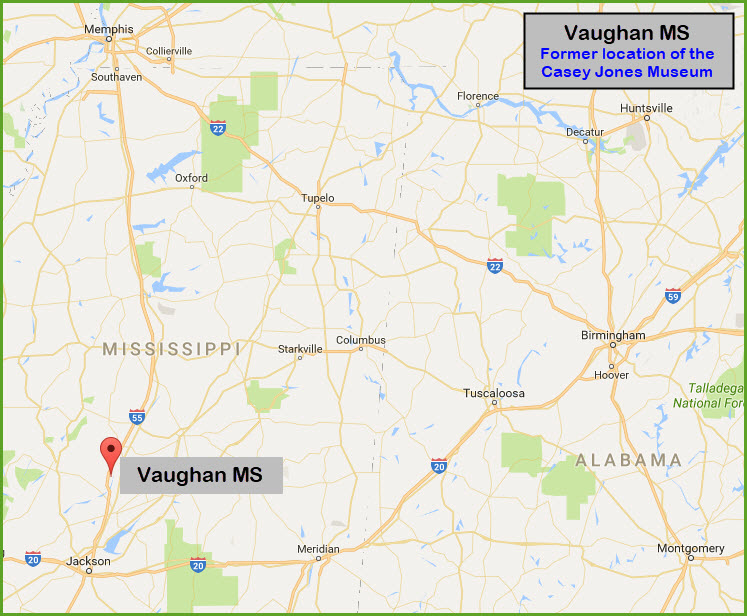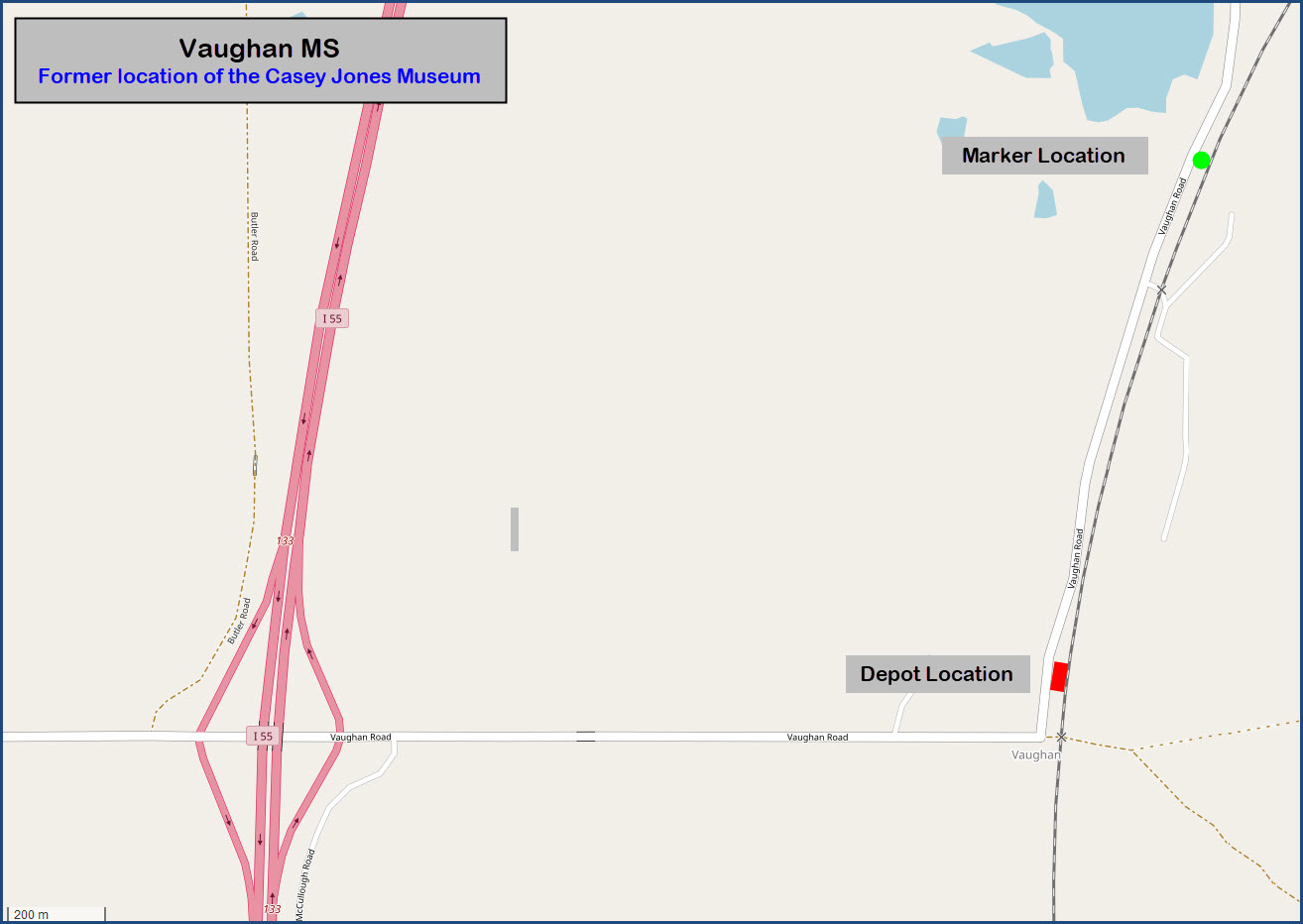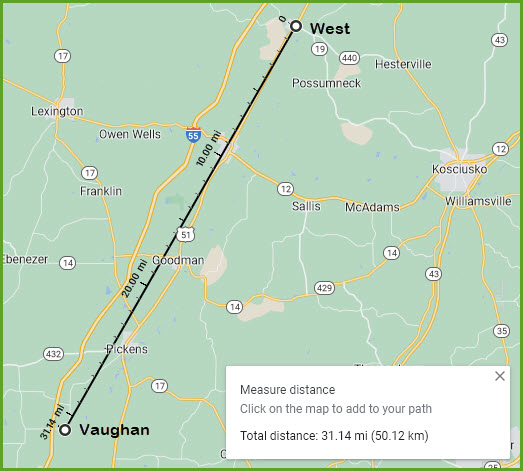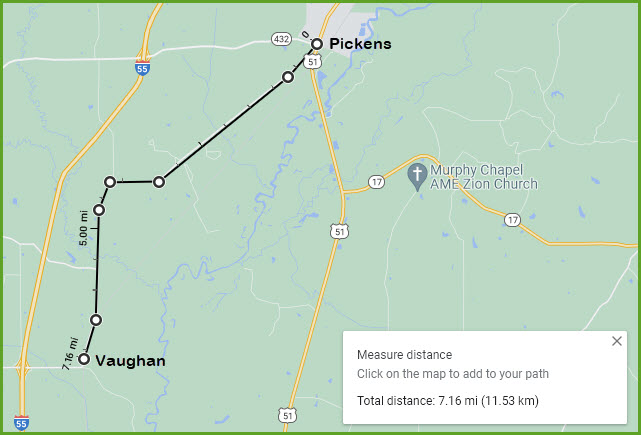
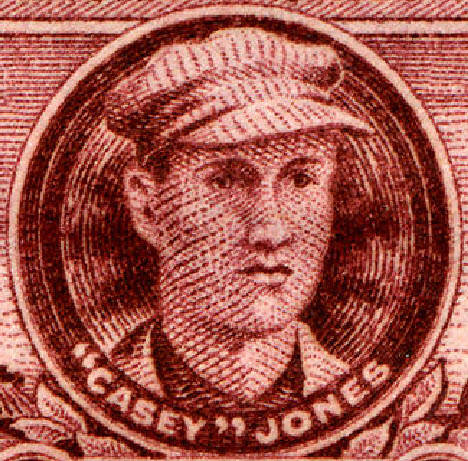
In General
Getting Here
Map
Sights
Floobydust
RAILFAN GUIDES HOME
RAILROAD SIGNALS HOME
Location / Name:
Vaughan MS, Yazoo County
What's Here:
Nothing Anymore
Data:
GPS Coordinates: 32.807442, 90.041316
ZIP: 39179
Access by train/transit:
None
The Scoop:
Vaughan MS is the location, where in the wee hours of April 30th, 1900, an engineer on the Illinois Central, "Casey" Jones, died as the result of a crash. There is a Casey Jones museum in Jackson TN, where he was living at the time of his death.

The following excerpt comes from the "DE" source listed below......
Once in a great while an individual attains a degree of fame that is tantamount to legend. Such a man was Engineer John Luther ("Casey") Jones (1864-1900), who died at his post on an Illinois Central Railroad Express train on April 30, 1900.
Although he had been born in southern Missouri, he was called "Casey" in reference to his boyhood home of Cayce KY. At age 15, he went to work for the Mobile & Ohio Railroad as a telegrapher, and three years later he became a fireman. In 1888 Casey moved to the larger Illinois Central, and within two years he achieved his goal of becoming a steam locomotive engineer.
The then 26-year-old, 6'-4" engineer ran fast freights for the IC, first out of Jackson MS, and later out of Centralia IL. In 1892 he was assigned to a local express taking fairgoers from downtown Chicago to the World's Columbian Exposition. For the next seven years he was back on freights, with his home base at Water Valley MS. He was known up and down his division for his six-tone calliope whistle and the "whippoorwill call" he played upon it, and among co-workers for his dashing good looks and high spirits.
As the new century began, Casey Jones was promoted to as prestigious a job as the Illinois Central could offer. He was to pilot the company's premier Chicago-New Orleans passenger train, the "New Orleans Special," also known as the "Cannonball." His division covered the 188 miles south of Memphis.
On the night of April 29,1900 the 36-year-old Casey and his fireman, Sim Web, brought the northbound "Cannonball" (officially, the "Chicago Fast Mail") into Memphis on time. There they learned that the engineer scheduled to take the southbound "Cannonball" when it arrived from Chicago was out sick, and they were asked to turn around and retrace the miles they had just logged. They agreed, with Jones insisting that he be able to use his regular engine -- the 4-6-0, Number 382, that he had just brought in from Canton, Mississippi at the head of the northbound. The 10-wheeler was readied, but Jones and Sim Webb had to cool their heels: the southbound "Cannonball" was late and they would be leaving Memphis 95 minutes behind schedule.
The train orders Casey received that night specified that the southbound "Cannonball" be on time at Canton, which meant that those 95 minutes would have to be made up in 188 miles. That was not any problem for Casey Jones, as Sim Webb recalled some years later that "running on time was his hobby." By the time the train left Granada, 100 miles into the run, one hour had already been erased from the deficit; after another 23 miles, the "Cannonball" was only 15 minutes late. Casey Jones approached the little depot at Vaughan almost on time. "The old girl's got her high-heeled slippers on tonight," he shouted to his fireman over the thunder of his roaring locomotive.
Jones hoped Vaughan wouldn't cost him any time. His orders told him to "saw" through two freights that were sided at the station. This was a common enough procedure when the total length of the sided trains exceeded the length of the siding: the far train extended off the siding through the switch at the far end, and out on the main track. Once the incoming train had cleared the first switch it would back up and clear the far switch. That synchronized maneuver would clear the main track ahead and the through train could continue on its way.
It would all have gone smoothly if an air hose hadn't broken on the first of the two sided freights, delaying its southbound maneuver. There were no automatic signals in those days, so a flagman was sent to warn the "Cannonball" to stop well short of the four cars of the freight that blocked the track at the north switch. For whatever reason, Jones did not heed the flagman's lantern signal and approached the curve leading into the north switch at 70 mph. He only began to brake when his wheels exploded a warning "torpedo" the flagman had placed on the track. Within seconds, Fireman Webb saw the lights of the freight's caboose around the bend up ahead and shouted "Look out! We're gonna hit something." Jones told Webb to jump, and hit the emergency brakes. The "Cannonball" was doing considerably less than 50 mph when it struck the freight, but the big 10-wheeler tore through the caboose and one boxcar, the impact killing Casey Jones. He was the only casualty of the wreck.
A song about Casey Jones, in its dozens of variations, put the doomed engineer into the realm of folklore, and cast him into so much of an example of reckless bravery that now -- a full century later -- people ask, "Was there REALLY a Casey Jones?
Yes, There was.
Websites and other additional information sources of interest for the area:
http://www.msrailroads.com/Towns/Pickens.htm
https://en.wikipedia.org/wiki/Vaughan,_Mississippi
http://www.uqp.de/cjr/casey_jones.htm
https://www.caseyjones.com/museum/
Exit 133 off of I-55. Go east on Vaughan Rd 1.02 miles to the former location of the depot. Vaughan is about 37 miles north of Jackson MS.
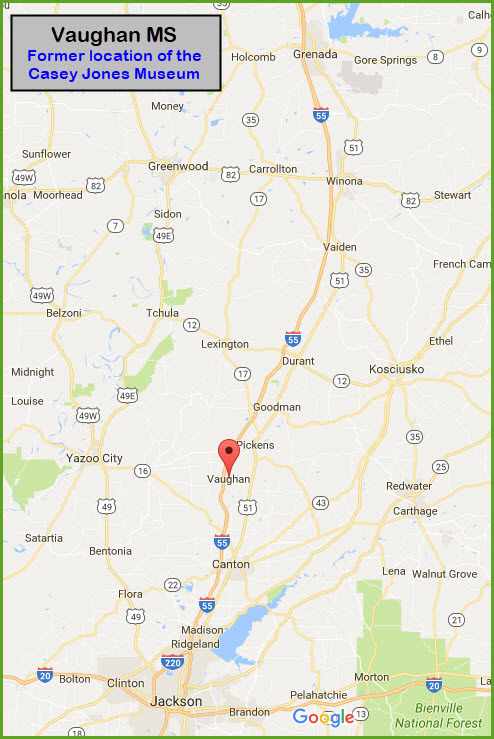
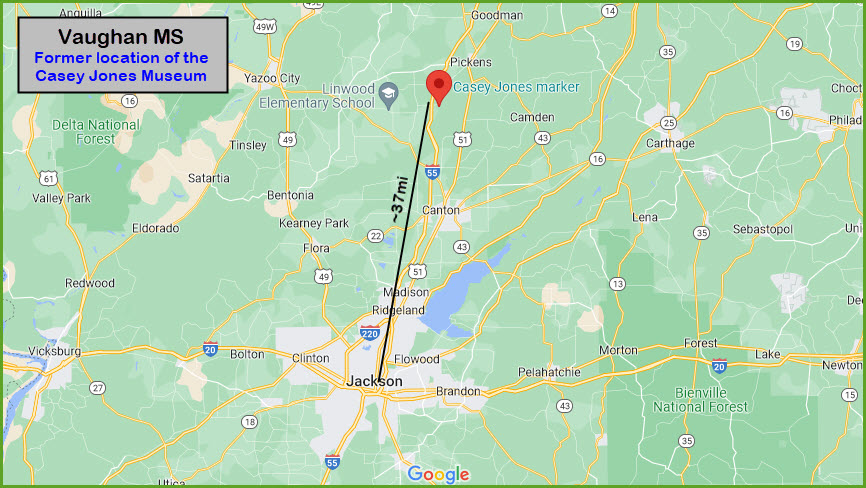
GPS Coordinates: 32.807442, 90.041316
The depot that used to be located here, and used as THE Casey Jones Museum, was actually a depot relocated from Pickens MS. Sometime after the museum closed in 2004, according to Wikipedia, the depot was again moved to West MS.
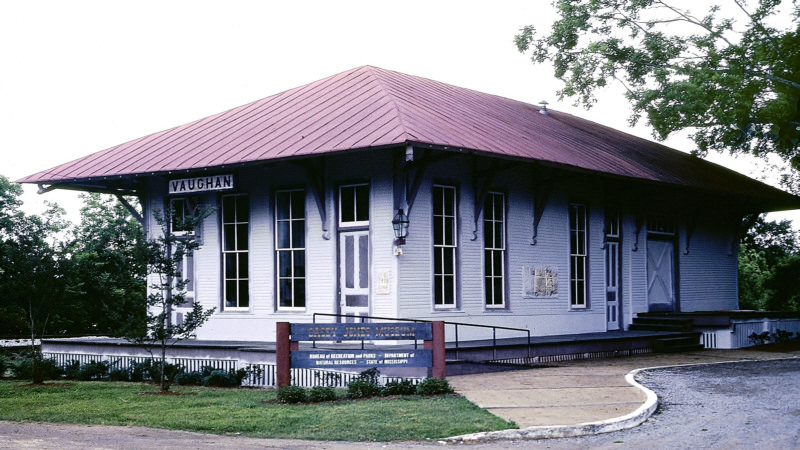
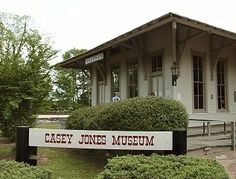
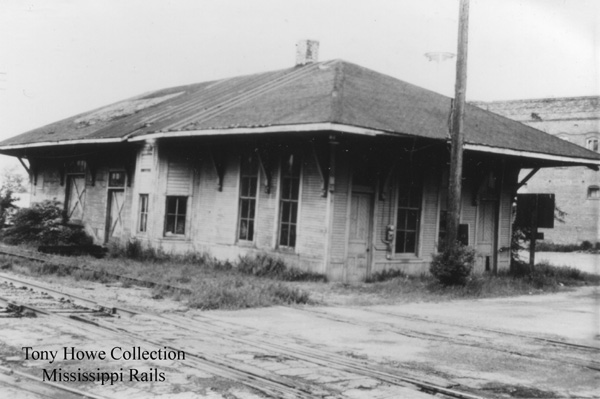
The depot in Pickens before being moved to Vaughan.
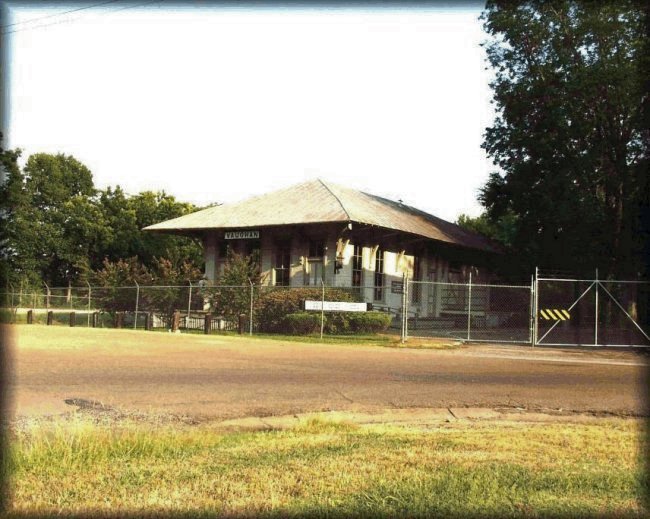
Found this on the internet, but no information available with the picture as to where it was taken....
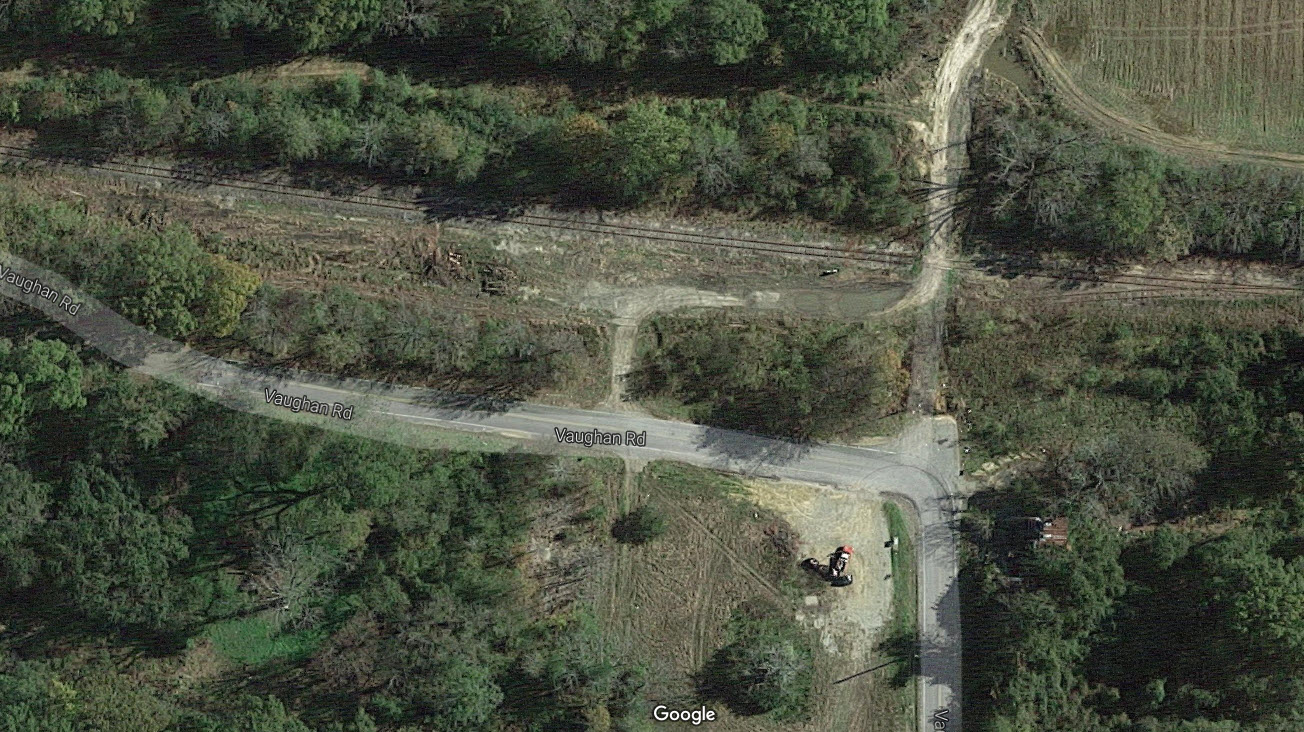
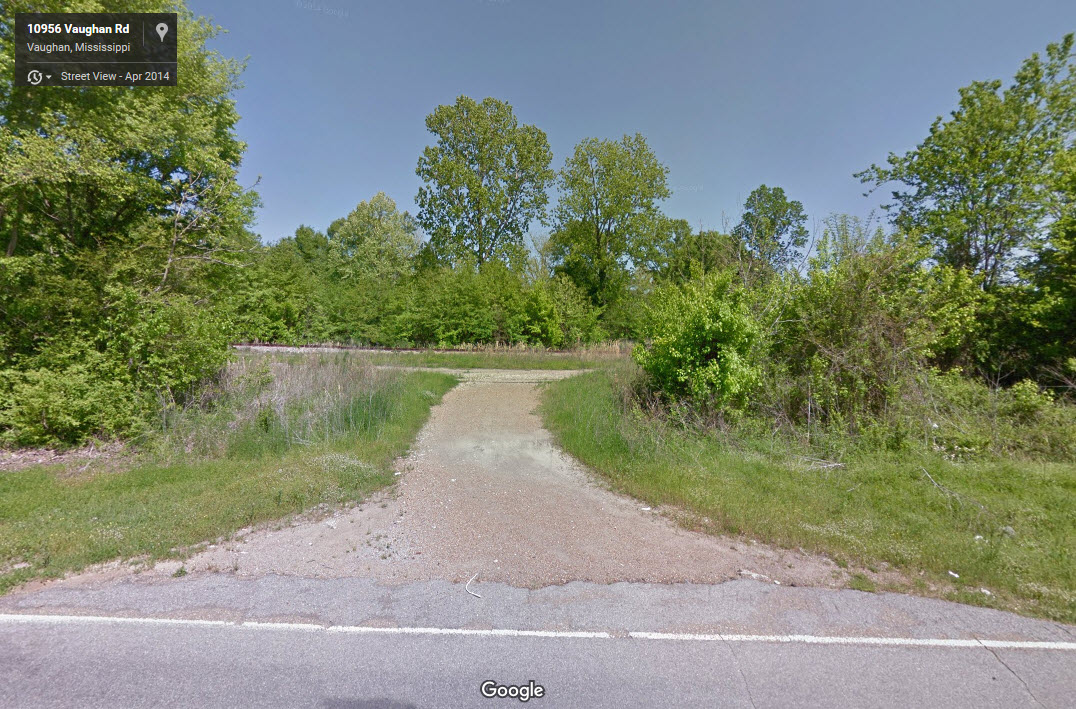
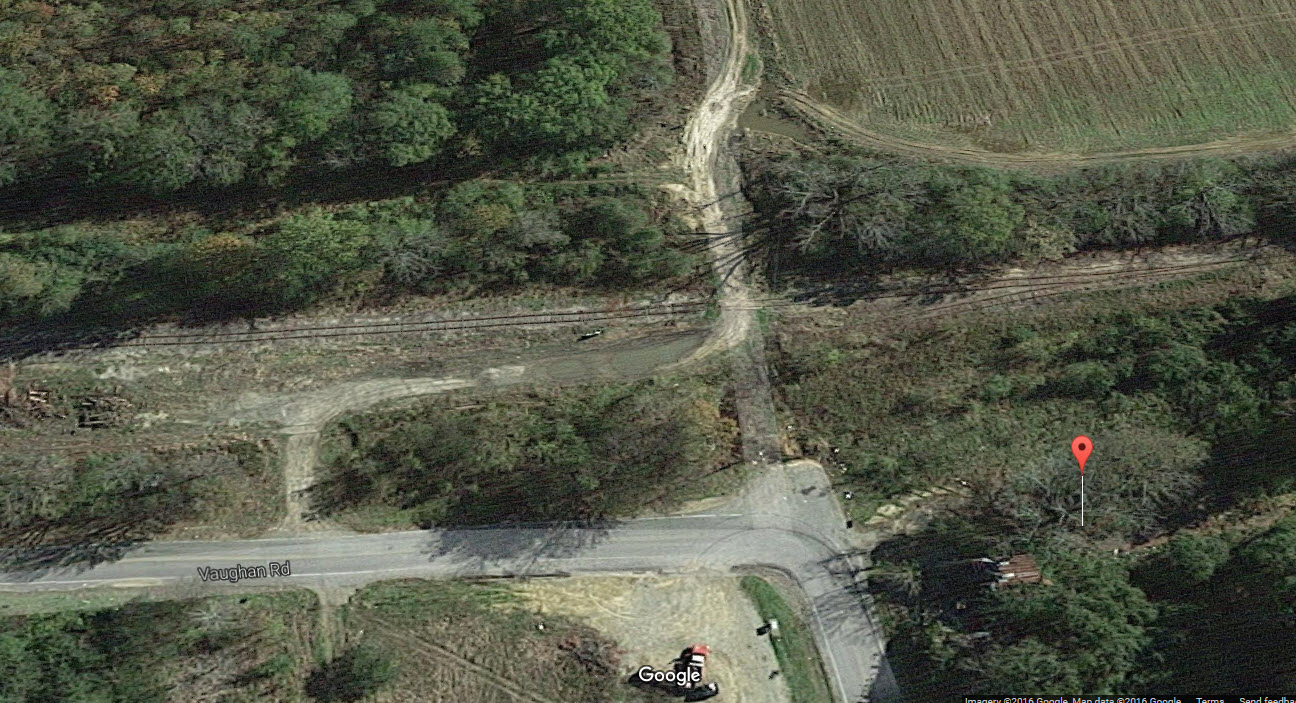
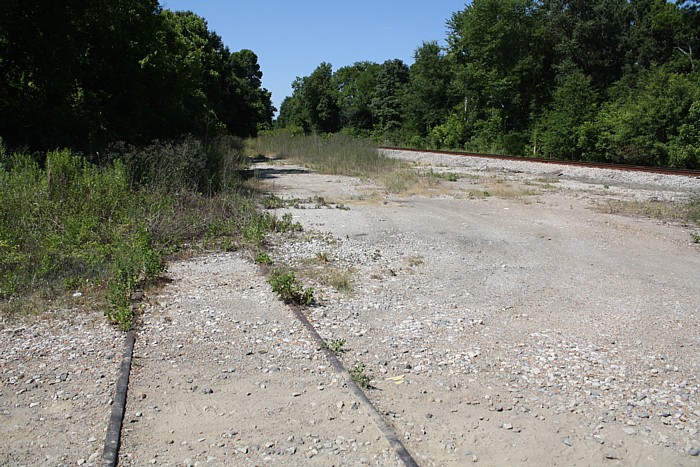 Where one of the Vaughan sidings used to be
Where one of the Vaughan sidings used to beGPS Coordinates: 32.816590, 90.038428
The marker at this location was stolen, and all that remains is the mounting post. It was dedicated in 1953, and the ceremony was attended by Sim Webb (the fireman of the train), and Janie Jones ( Casey Jones' widow). I'm looking for pictures of it. I do not believe I knew about it back in 1985 in order to go out and get a picture of it when I was here in April of that year. Darn. The marker is/was about 3300 feet north of where the depot was located.
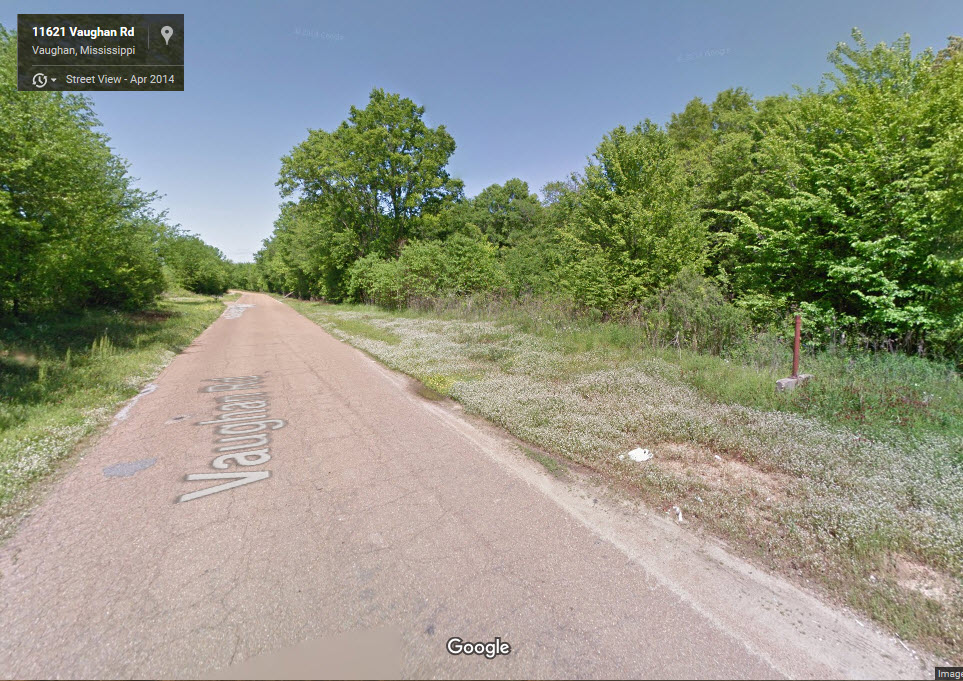
GPS Coordinates: 32.816590, 90.038428
56 Casey Jones Ln., Jackson TN 38305
731-668-1223
Monday-Saturday: 10am-5pm // Sunday: 1pm-5pm
Adults: $8.00 // Senior Citizens (60+): $7.00 // Children (4-10) years: $5.00
Although not in Vaughan, it is listed here for continuity.
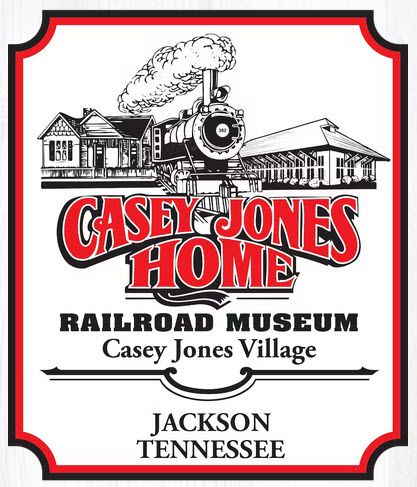
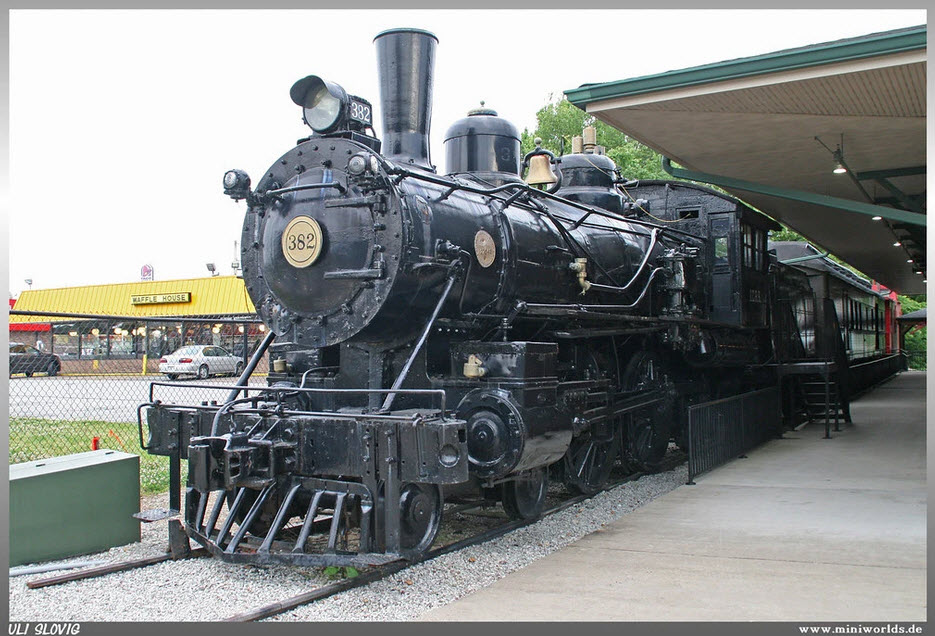
A stamp was issued in 1950 which featured Casey Jones on the face. This is accompanied by several first day covers found on EBay. The stamp goes for anywhere from $2 on up, and you can get a sheet of them for 6 bucks plus shipping! The first day covers are going from about $6 on up.
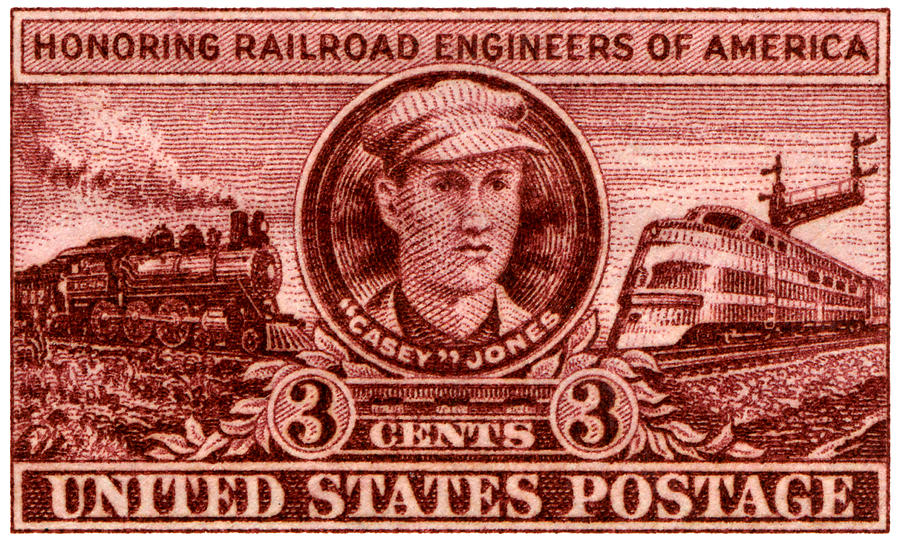
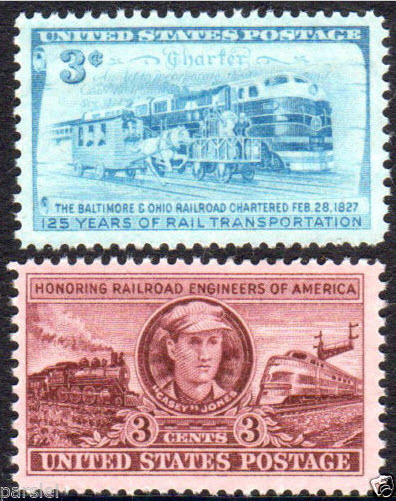
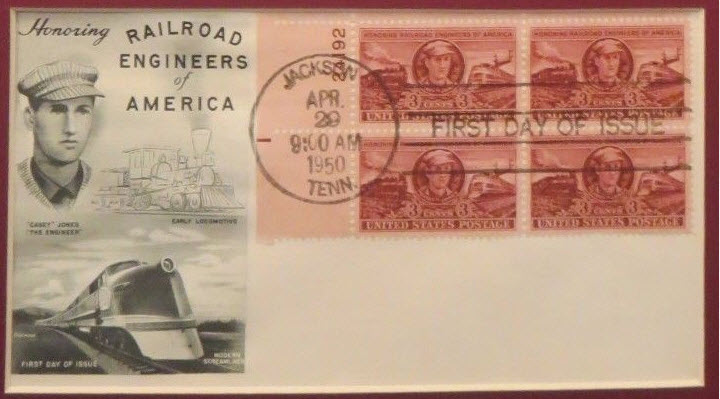
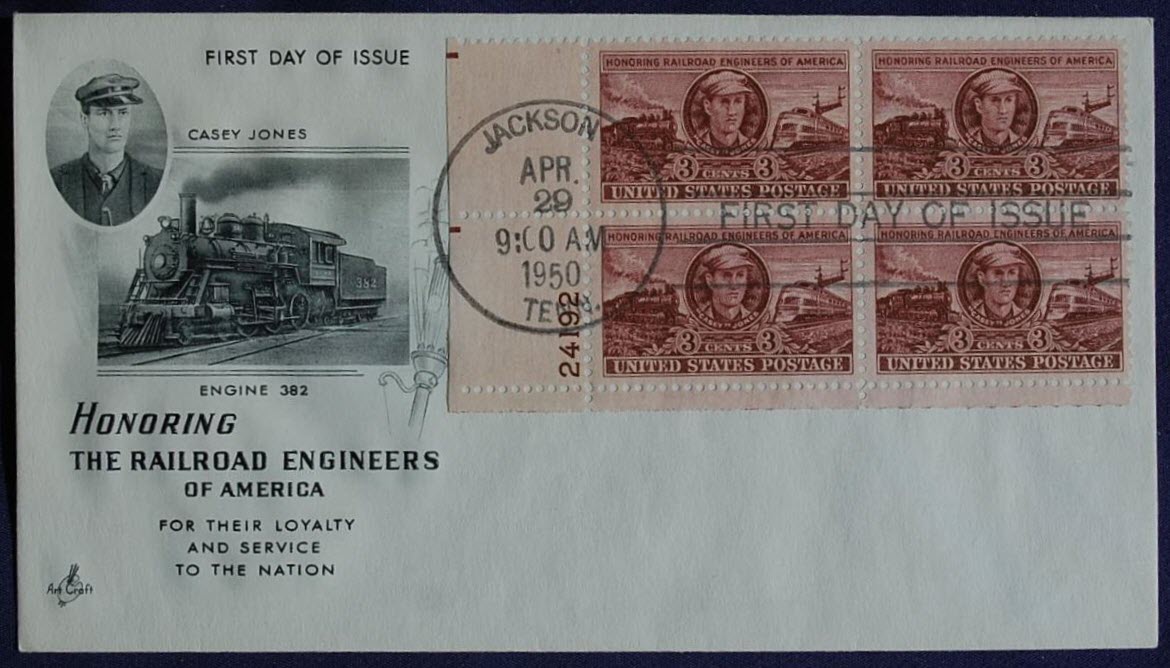
Disclaimers:
I love trains, and I love signals. I am not an expert. My webpages reflect what I find on the topic of the page. This is something I have fun with while trying to help others.
Please Note: Since the main focus of my two websites is railroad signals, the railfan guides are oriented towards the signal fan being able to locate them. For those of you into the modeling aspect of our hobby, my indexa page has a list of almost everything railroad oriented I can think of to provide you with at least a few pictures to help you detail your pike.
If this is a railfan page, every effort has been made to make sure that the information contained on this map and in this railfan guide is correct. Once in a while, an error may creep in :-)
My philosophy: Pictures and maps are worth a thousand words, especially for railfanning. Text descriptions only get you so far, especially if you get lost or disoriented. Take along good maps.... a GPS is OK to get somewhere, but maps are still better if you get lost! I belong to AAA, which allows you to get local maps for free when you visit the local branches. ADC puts out a nice series of county maps for the Washington DC area, but their state maps do not have the railroads on them. If you can find em, I like the National Geographic map book of the U.S..... good, clear, and concise graphics, and they do a really good job of showing you where tourist type attractions are, although they too lack the railroads. Other notes about specific areas will show up on that page if known.
Aerial shots were taken from either Google or Bing Maps as noted. Screen captures are made with Snagit, a Techsmith product... a great tool if you have never used it!
By the way, floobydust is a term I picked up 30-40 years ago from a National Semiconductor data book, and means miscellaneous and/or other stuff.
Pictures and additional information is always needed if anyone feels inclined to take 'em, send 'em, and share 'em, or if you have something to add or correct.... credit is always given! Please be NICE!!! Contact info is here
Beware: If used as a source, ANYTHING from Wikipedia must be treated as being possibly inaccurate, wrong, or not true.
RAILFAN GUIDES HOME
RAILROAD SIGNALS HOME
NEW DEC18/2016, DEC19/2016, NOV10/17/2022
Last Modified 17-Nov-2022
